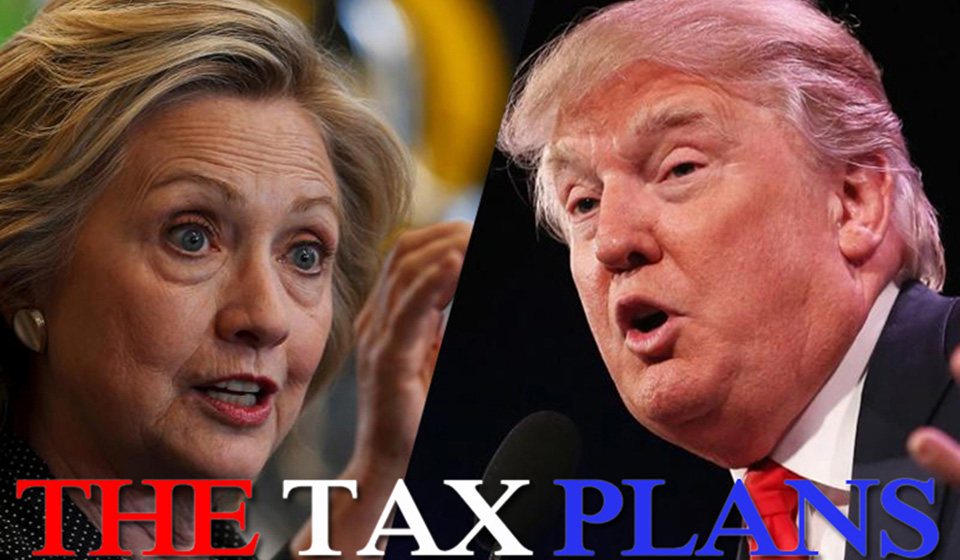
If you’re a low wage worker, especially a single mom, what you pay for child care while you’re on the job is almost unbearable. Both Hillary Clinton and Donald Trump say they have tax plans to lighten this burden.
Experts say Clinton’s plan is a good example of her general approach to taxes. In the words of nationally known financial advisor Dan Caplinger: “Clinton has made that idea of basic fairness the centerpiece of her tax strategy …”.
They also agree with Washington Post economic reporter Max Ehrenfreund that the Trump plan is a good example of his general approach to taxes. “Donald Trump,” Ehrenfreun writes, “has called for historic tax relief for the rich, which would likely add trillions of dollars to the national debt.”
Clinton’s plan is very straight forward. She would double the size of the child tax credit, for both low- and middle-income families and would expand its coverage so that some 14 million additional families would become eligible.
Clinton helped design the child tax credit program in the first place and helped ensure its overwhelming, bi-partisan passage during the Clinton Administration.
Currently, low income and middle class families who have to pay for child care services while they work get a tax break of $1,000 per child. Clinton proposes to increase this to $2,000 for each child under four years of age.
Families too poor to owe any income tax can claim the credit and receive a check from the government.
Furthermore, Clinton would expand the credit to cover an estimated 14 million more families by raising the qualifying income thresholds.
Clinton’s plan is part of a comprehensive program to aid children and families in many ways. Clinton proposes to make pre-K universal for 4-year-olds, to double Head Start, and to extend paid leave to all workers who are new parents.
Trump’s proposed child care tax credit is part of a comprehensive program to make billionaires such as himself even richer.
Under his plan, the child tax credit due to low wage families would be limited to $1,200 per family, no matter how many children they have. What’s worse, families who earn too little to be taxed would get no help at all.
Trump’s plan substitutes a child care tax deduction for a tax credit. The more a family pays for child care, the more they could deduct. But deductions are worth a lot more to people in higher income brackets.
In fact, Trump’s entire tax plan is geared to benefit those in higher income brackets.
Clinton’s plan requires the rich to pay their fair share toward supporting our nation.
Clinton has outlined ambitious programs to help all working people, including low wage earners, have a decent standard of living with a secure future. Her proposals also include the expansion of affordable health care and affordable higher education.
To pay for this, Clinton says “We have got to go where the money is, and the money is with people who have taken advantage of every single loophole in the tax code.”
Under the Clinton plan, the effective tax rate for the rich would rise by 1.5 percent.
Furthermore, the Clinton proposal contains three new ways by which the wealthy would be required to pay their fair share: a four percent additional tax on individuals earning $2.5 million or more per year; a strict limit on the amount of non-charitable deductions that high earners can take and a new minimum effective tax of 30 percent for individuals earning $1 million or more a year.
With Trump, the rich get richer
On the other hand, under the Trump tax proposal the average change in the effective tax rate for the top one percent of earners would drop by 6.5.percent, according to the Tax Policy Center. Altigether, the Trump tax cuts would hand the top 0.1 percent of earners an income increase of 14 percent.
Businesses would get an even bigger windfall under the Trump plan. The top corporate tax rate would be slashed from 35 percent to 15 percent.
Of course, no Trump plan would be complete without there being something in it for Trump himself. In the case of his tax plan, he would give a big break to “flow through” companies, such as those he owns.
A “flow through” is a business organization that regularly distributes a portion of its income to investors. The entity itself pays no taxes, but the investors pay taxes on the income they earn at the individual income tax rate. Common types of flow throughs are general partnerships, limited partnerships and limited liability partnerships. Trump loves to set them up and then walk away because the investors, not Trump himself, are liable.
The Trump plan would make such entities even more enticing to any investor Trump could suck in. Under his plan, the investors would not pay taxes at the individual rate, but at the much lower corporate rate.
According to Jonathan Cohn of the Huffington Post, “the bottom line on Trump’s income and corporate tax proposals is the same in pretty much any permutation. It’s a windfall for the wealthy, and that includes members of the Trump family.”









